new posts in all blogs
Viewing: Blog Posts Tagged with: Anita Lobel, Most Recent at Top [Help]
Results 1 - 4 of 4
How to use this Page
You are viewing the most recent posts tagged with the words: Anita Lobel in the JacketFlap blog reader. What is a tag? Think of a tag as a keyword or category label. Tags can both help you find posts on JacketFlap.com as well as provide an easy way for you to "remember" and classify posts for later recall. Try adding a tag yourself by clicking "Add a tag" below a post's header. Scroll down through the list of Recent Posts in the left column and click on a post title that sounds interesting. You can view all posts from a specific blog by clicking the Blog name in the right column, or you can click a 'More Posts from this Blog' link in any individual post.

By: Samantha McGinnis,
on 3/11/2016
Blog:
First Book
(
Login to Add to MyJacketFlap)
JacketFlap tags:
Health and Wellness,
healthy eating,
Mario Batali,
Anita Lobel,
From Educators For Educators,
Your Stories,
10 Hungry Rabbits,
First Five Permian Basin,
parents as teachers,
Add a tag
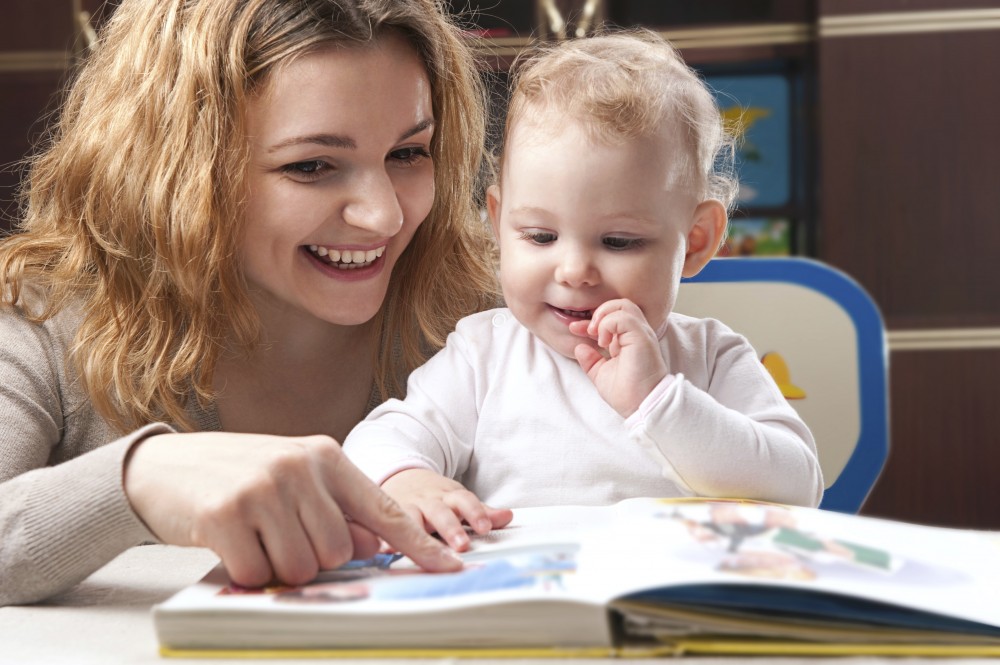
The hundreds of parents in First Five Permian Basin’s Parents as Teachers program are learning to be their child’s first teacher. They’re excited for the challenge. Topics like counting, shapes and colors are at the top of the list of concepts to teach their kids.
“Our parents may ask how to teach a certain concept like colors or counting, and we love to incorporate books into the process,” explains Beth Meyerson, Director of First Five Permian Basin.
Recently, the program received 10 Hungry Rabbits by Anita Lobel, part of the Healthy Kids Collection created by the Mario Batali Foundation, a book that reinforces the concepts of counting and colors.
But this story allowed parents to teach their children much more than these basic concepts. In addition to the benefits of reading aloud to young child, it offered a fun way to model healthy eating and living.
The book shows a family of hungry 10 bunnies and a mother rabbit who has nothing to fill her soup pot. One by one, the bunnies go to the garden. They find vegetables and fruits of various colors and numbers to fill the pot, all accompanied by beautiful illustrations that would entice any hungry young reader. At the end of the story, the family sits down to enjoy a big, healthy pot of vegetable soup.
“Children are making neural connections when they are so young, so what they learn in the first five years of their life is going to imprint with them,” explains Beth. “Whatever message they’re hearing or seeing from their parents is going to plant inside them as a young child. So, if a child has exposure to how wonderful carrots and broccoli are, it’s going to become a part of their ongoing life.”
The Healthy Kids Collection features several books that teach basic concepts while highlighting healthy living and eating. If you work with children in need, you can access these books through the First Book Marketplace.
The post Teaching Much More Than Basic Concepts appeared first on First Book Blog.


By:
Roger Sutton,
on 7/27/2015
Blog:
Read Roger - The Horn Book editor's rants and raves
(
Login to Add to MyJacketFlap)
JacketFlap tags:
Reviews,
Picture Books,
primary,
Recommended Books,
Horn Book Magazine,
preschool,
starred reviews,
Anita Lobel,
Reviews of the Week,
hbmjul15,
hbmjul15revs,
Add a tag

 Playful Pigs from A to Z
Playful Pigs from A to Z
by Anita Lobel; illus. by the author
Preschool, Primary Knopf 40 pp.
7/15 978-0-553-50832-1 $16.99
Library ed. 978-0-553-50833-8 $19.99
e-book ed. 978-0-553-50834-5 $10.99
Twenty-six pigs wake up in their pen and decide to explore the countryside, running down the road and finding a field of “magical surprises”: brightly colored, freestanding letters of the alphabet. Lobel’s soft early-morning watercolors give way to bolder pages on which each pig is now clothed and standing upright. The entire alphabet, set in a distinctive condensed typeface, runs along the top and bottom borders while each pig interacts happily with a single tall, thin letterform (all are upper-case but i). Lobel uses a name-verb-letter structure (“Amanda Pig admired an A. Billy Pig balanced on a B”), with rolling hills below and plenty of white space behind the pig and letter. Repeat readers will spot an extra object beginning with the letter in question tucked into a lower corner. Gender roles are satisfyingly relaxed: Greta, a female soldier, guards the G, while on the opposite page Hugo tenderly hugs an H. By the time Yolanda yawns and Zeke zzzs, evening has arrived and the pigs return to their pen in a mirror image of the opening spreads, once again unclothed and running on all fours. Dinner is followed by bedtime, with all twenty-six snuggled together cozily. This playful treatment creates a humorous, easygoing book that should relieve any anxiety about learning the alphabet.
From the July/August 2015 issue of The Horn Book Magazine.

The post Review of Playful Pigs from A to Z appeared first on The Horn Book.
By:
Bianca Schulze,
on 4/2/2012
Blog:
The Children's Book Review
(
Login to Add to MyJacketFlap)
JacketFlap tags:
Rachel Vail,
Lily Karr,
Easter,
Jeremy Tankard,
Jan Thomas,
Dan Andreasen,
Seasonal: Holiday Books,
Leslie Ann Clark,
Anita Lobel,
Jay Johnson,
Jon N. Hulme,
Ages 0-3,
Ages 4-8,
Picture Books,
Book Lists,
Tad Hills,
Add a tag
By Bianca Schulze, The Children’s Book Review
Published: March 31, 2012
By Rachel Vail; Illustrated by Jeremy Tankard
Ever had aspirations to be someone or something other than who or what you are? The piggy in this book, Liam, wants to be a bunny—the Easter bunny, to be exact. He’s willing to put in the hard work, even if it means eating salad. Nobody in his family, except for his grandma, believes he can become the Easter bunny, but Liam remains focused and with his can-do-attitude and support from grandma he makes his dream come true. Jeremy Tankard’s ink and digital media artwork are the icing on the cake (or the foil wrapper on the Easter egg, if I may) adding emotion to the story through little piggy faces and bodies. Liam is adorable and so is this story. (Ages 4-6. Publisher: Feiwel and Friends)
By Jan Thomas
Jan Thomas is one funny author. In her latest book the Easter bunny is doing his best to teach readers how to dye Easter eggs, however, his assistant Skunk keeps getting over-excited and … well, let’s just say he has trouble containing himself. The combination of the bright illustrations and well-timed text create a laugh-out-loud picture book perfect for an Easter story time session. (Ages 2-5. Publisher: HarperCollins)
By Leslie Ann Clark
From the moment Peepsqueak, a chicken, hatches from his egg he is raring and ready to fly. Even though everyone tells him he is not ready, Peepsqueak remains determined and filled with self-belief—the perfect recipe for reaching goals. Leslie Ann Clark uses rhythmic and repetitive text that begs to be read aloud; and her sweet cartoon illustrations give Peepsqueak a delightful amount of bounce. Great for spring and Easter, but definitely an all-year read that is sure to be a request over and over again. (Ages 2-5. Publisher: HarperCollins)
By Anita Lobel
Anita Lobel, a Caldecott Honor Book illustrator, has created a charming little number with 10 Hungry Rabbits. 10 very hungry rabbits set out to find 10 vegetables from the garden for Mama Rabbit’s soup pot. Using gouache and watercolors, Lobel’s illustrations prime readers well with an exploration of color as each rabbit collects their chosen vegetable

By:
Annie Beth Ericsson,
on 3/5/2012
Blog:
Walking In Public
(
Login to Add to MyJacketFlap)
JacketFlap tags:
betsy bird,
early reader,
Arnold Lobel,
illustration sensations,
Yertle The Turtle,
anita lobel,
re-seussify seuss,
school library journal,
videos,
paintings,
watercolor,
dr seuss,
fuse #8,
frog and toad,
Add a tag
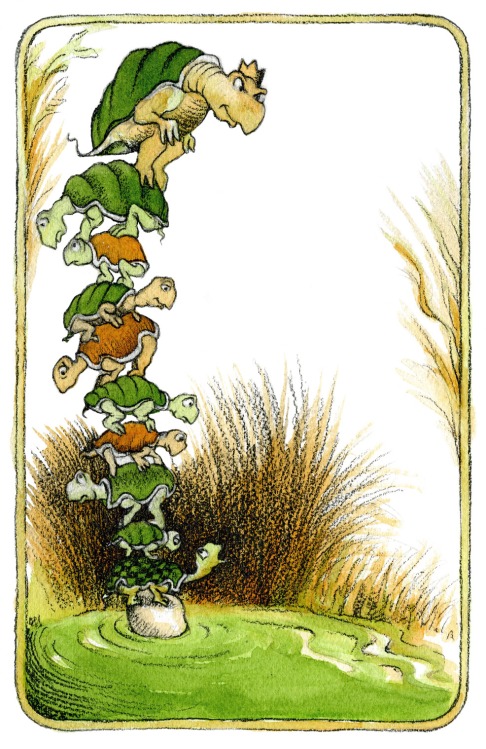
In case you missed it, this week’s results for School Library Journal’s Fuse #8 Re-Seussify Seuss challenge were in, and they were pretty spectacular! The mission, as set forth by children’s lit guru Betsy Bird, was to draw a spread from a Dr. Seuss book, but in the style of ANOTHER famous picture book artist. I was inspired by the fun mash-up idea, and pulled off the image of Yertle The Turtle in the style of Arnold Lobel, above.
The idea for the image itself came to me pretty easily. It’s no surprise that I love drawing turtles, and Yertle The Turtle is a family favorite. The reptile vs. amphibian factor – Yertle crossed with Frog and Toad - was amusing to me as well. In particular, I wanted to try my hand at Arnold Lobel’s style. I thought the limited palette with textured graphite would be fun, and his characters and watercolors lend themselves easily to my own style. Plus, he’s a fellow Pratt alum!
I learned a lot about Arnold Lobel’s creative process from this video with his daughter, Anita Lobel. She sought to replicate her father’s paintings when she colored Arnold Lobel’s unfinished The Frogs and Toads All Sang:

I am very interested in Lobel’s use of color separations to make the Frog and Toad illustrations, and I wish I could find more on the subject. While Anita went with full-color in her recent interpretation, I wanted to imitate the 2-color (and black) separations by sticking to a green layer, a brown layer, and dark graphite. I’m pleased with the result and think it was rather successful, if I do say so myself.
Now go check out Betsy’s post for the other mind-blowing creative Re-Seussification mash-ups!
Filed under:
illustration sensations,
paintings,
videos Tagged:
anita lobel,
Arnold Lobel,
betsy bird,
dr seuss,
early reader,
frog and toad,
fuse #8,
re-seussify seuss,
school library journal,
watercolor,






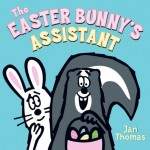
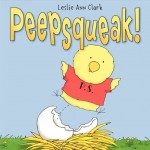
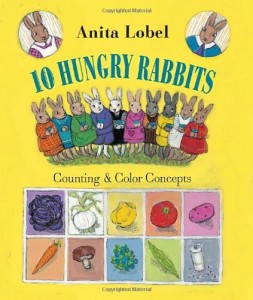


Totally proud that you made the list of awesome mash-ups! You rock like always! Now I can’t wait to see my mouse book!